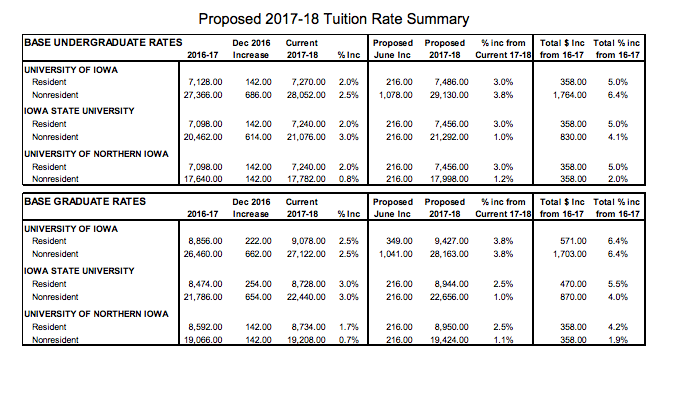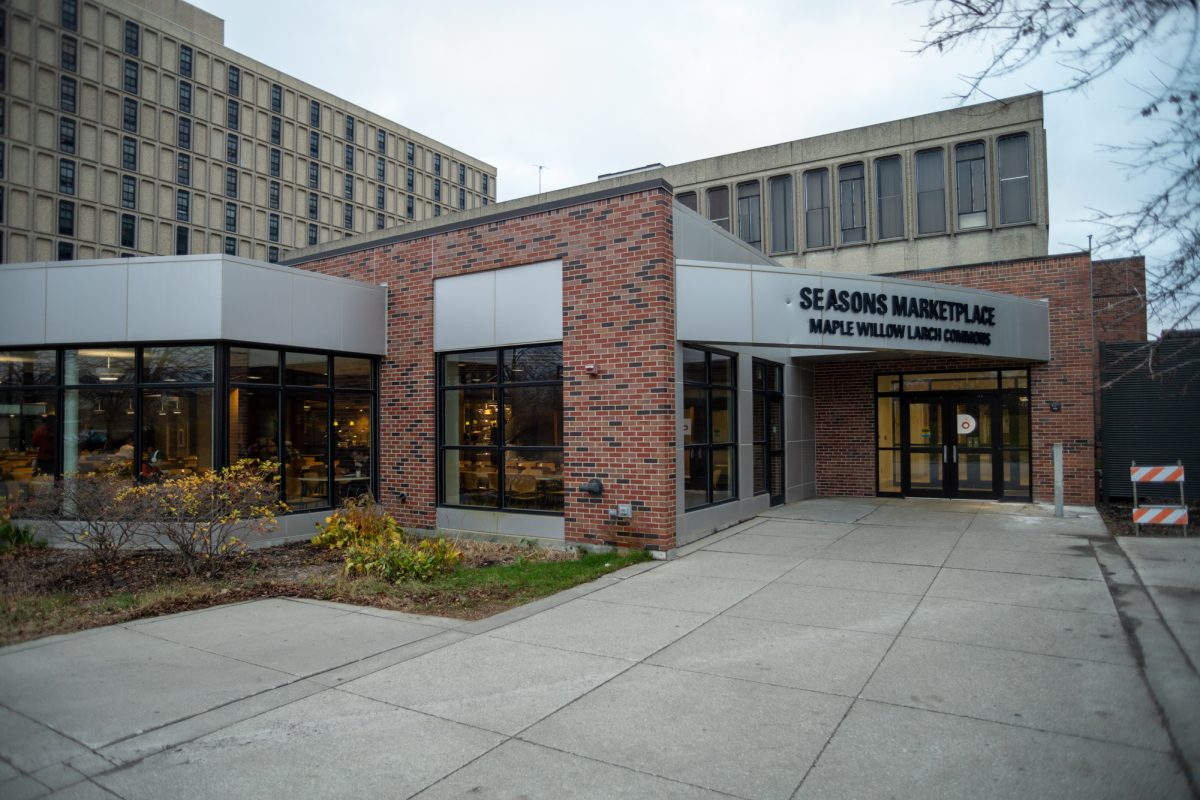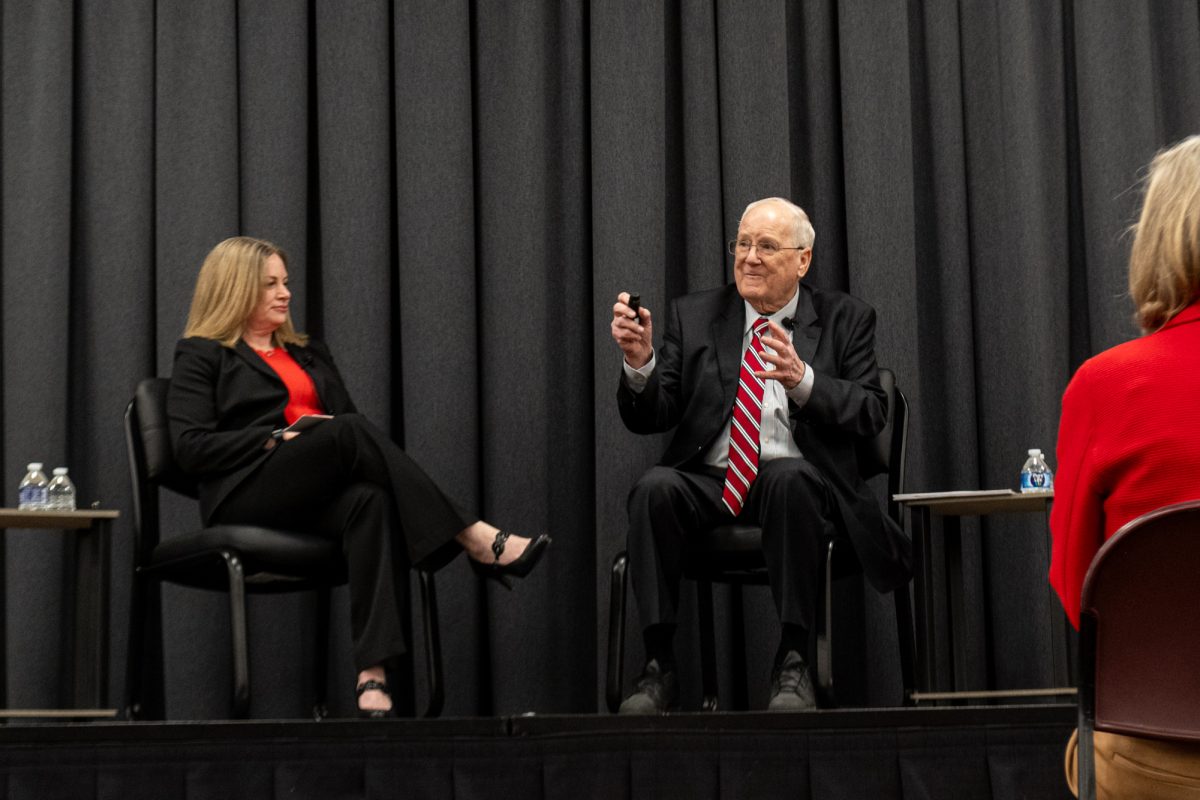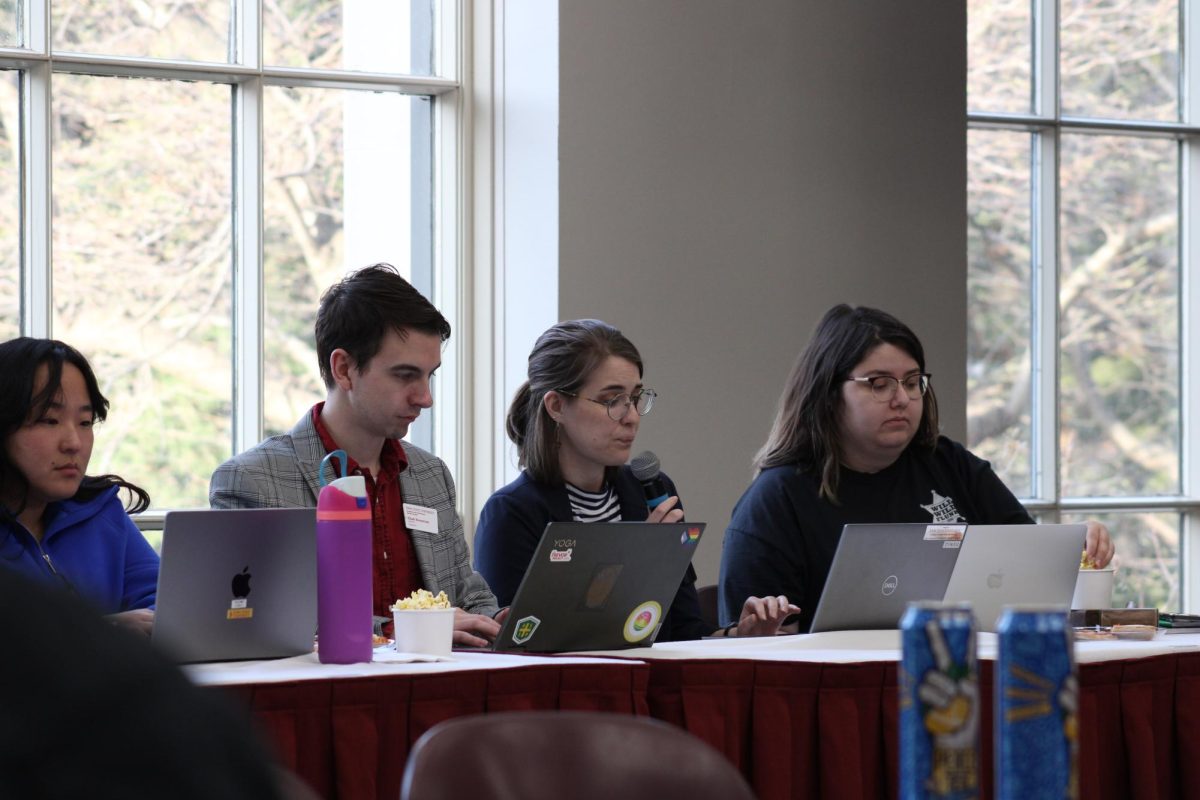StuGov President says state, not Regents, to blame for tuition increase
June 8, 2017
Iowa State Student Government President Cody West was at Thursday’s meeting of the Board of Regents. Along with the other student representatives from the regent universities, West heard in person the approval the passage of an additional tuition increase.
There are two components to higher education funding in Iowa: state appropriations and student tuition fees, supplemented by private donors. The Board of Regents decided to implement a plan built around those two components: 2 percent increase in tuition every two years, along with state appropriations increasing 2 percent in that time.
But things didn’t go according to plan.
The state appropriations, instead of increasing 2 percent, decreased by $9.58 million in addition to decreases that came in December 2016 from lower tax revenues. Those initial decreases already totaled $20.75 million across the three public universities before that addition.
In total, higher education appropriations from the state to the regent universities for fiscal year 2018 were $30.33 million less than the expected amounts.
“In general, no one likes tuition increases,” West said. “If we have to do it, we want to go with the best way possible.”
That best way possible was different for each university. Iowa State University chose a $216 increase to all students on top of proposed rates after the December funding loss. The University of Iowa proposed a 3.8% increase to out-of-state undergraduates and to all graduate students in addition to the $216 to resident undergraduates. The University of Northern Iowa had done a flat $147 in December to every student, then added $216.
The proposed tuition rates are expected to generate $25.67 million of the lost $30.33 million.
“[The tuition increase] ensures that I can come to Iowa State in the fall and I won’t loose any programs or services,” West said. “But really what it does is it just makes predictability, when it comes to affording college, a lot harder.”
Part of the problem is in the timing. State appropriations aren’t final until the end of spring. The university still tries to be transparent, and posts proposed numbers ahead of time.
“We’d really like to let students and families know how tuition is going to go for the next five years and we really can’t do that with how the state cuts money in the middle of the year and then decides to lessen our appropriation even more when it comes time to finalize the budget,” West said.
West said the fact the conversation has to happen over the summer is frustrating. He would prefer decisions were made during the year, when students are on campus to talk with campus leaders and administration.
“The fact it has to be done over the summer really just all comes back to the state house not giving us the funding we need to make sure that Iowa State is continuing to be successful,” West said.
To try to combat the traditional pattern – raising tuition after waiting to hear from the legislature – the regents plan to introduce a tuition task force. At the meeting they heard a presentation from Robert K. Toutkoushian, a professor in the Institute of Higher Education at the University of Georgia, on what to consider when looking at tuition increases and potential impacts.
Regent Larry McKibben said he was glad to see a switch to something more proactive.
“That whole time when we were talking about tuition I just felt like it was all common sense,” West said. “We hear about ‘be proactive instead of reactive’ all the time, and it just seems like something we should already be doing… I’m glad we’re all getting on the same page now.”
West said he thinks the task force is to put everyone on the same page about where the money comes from, where the money will go, and what Iowa can do as a state to make sure it’s investing in higher education.
“The hard part for students to realize is it’s not necessarily [the Board of Regents’] fault,” West said. “It’s not really on them at all. It’s really just the plate they’re dealt. They ask the institutions what they’re going to need in the fall, and we have to give them that bottom-dollar number for what we can scrape by with.”
West said the increase is just to maintain pace with costs at the universities and make up for the loss in state funding. West also said the student representatives of each university want to do a collaborative campaign to bring student input to the state legislature next year.
In total, ISU resident undergraduates see a 5 percent increase from 2016-17. Out of state undergraduates have a 4.1 percent increase; resident graduates have 5.5 percent and non-resident graduates have a 4 percent increase.
Percentage increases are what students are used to, but Iowa State went with the final flat dollar amount instead.
“When you’re looking at a two to five percent increase in tuition, that doesn’t really affect a resident student too much, maybe a couple hundred dollars. But when you look at a non-resident student, that gets closer to a thousand dollars,” West said. “When you do that year after year, that gap between in-state and out-of-state tuition continues to grow and grow and grow.”
Applying the same increase to students, no matter where they come from, is unusual. The University of Iowa gave preference to resident students, who will see a smaller increase in tuition at their university than other student groups.
“I think that sends a powerful message to the state house that if they continuously don’t give Iowa State the support it needs, we’re not going to let that burden not fall on in-state students,” West said.
The flat amount added to the December increases puts total monetary increases from 2016-17 to 2017-18 at $358 for resident undergraduates. Out of state undergraduates have a $830 increase; resident graduates increase by $470 and non-resident graduates by $870.






